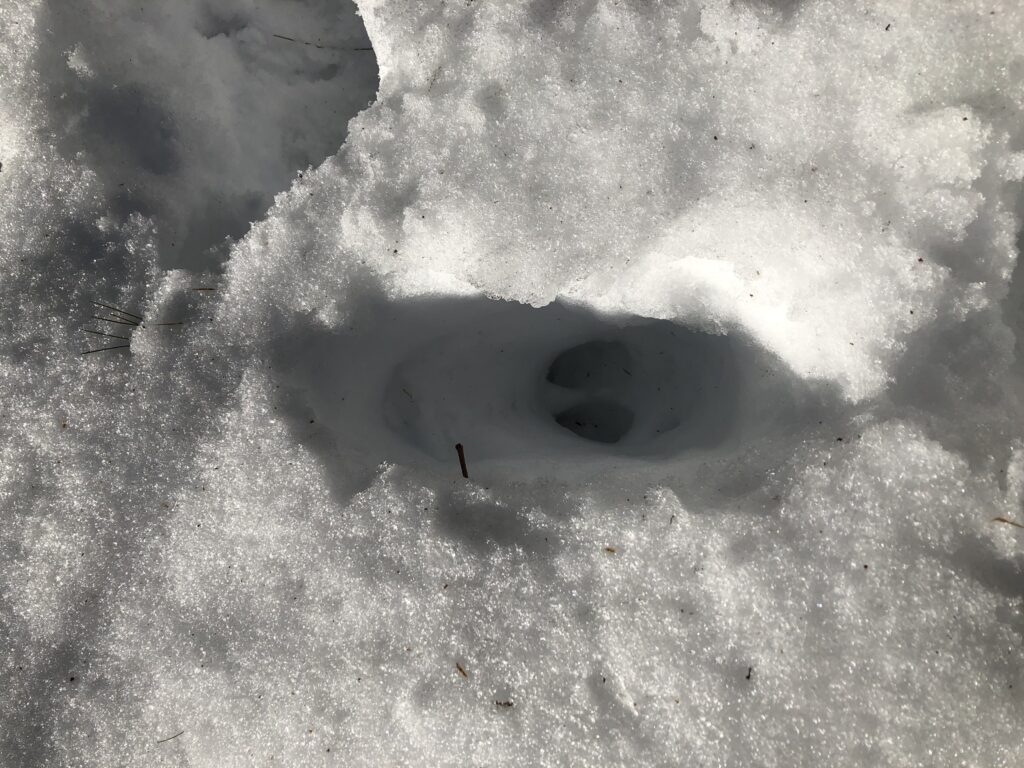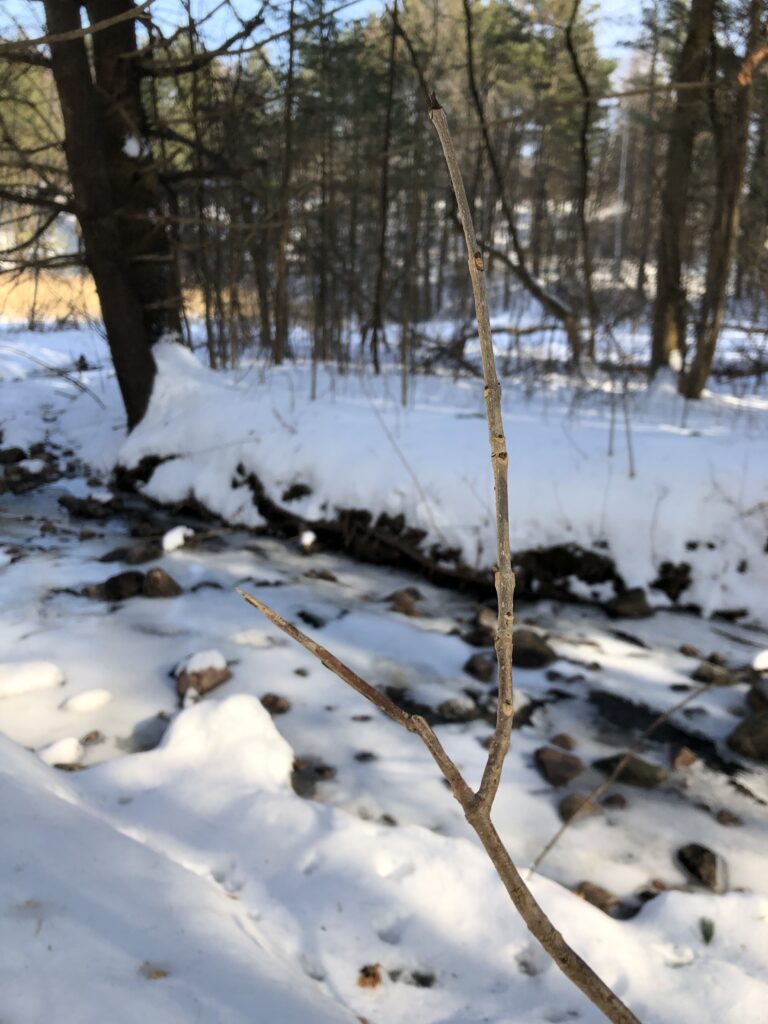
This month, my phenology site was very different from January. Albeit, I visited on an uncharacteristically warm day for February. Firstly, birds were chirping, and this is the first time I heard them all winter. I unfortunately do not have the skills to snap a photo of a flying bird, or the eyesight to identify one from that distance, but I noticed their presence. Additionally, there were many tracks in the snow as it had been a few days since the last snow. The tracks I identified belonged to deer, rabbits, and squirrels. I even was able to get a picture of a squirrel.

One animal that I chose to focus on was a deer. Its tracks were very distinct in the snow, and I was able to follow its path.

During the winters, deer – likely a white-tailed deer in this case – generally live in sheltered areas that protect them from the harsh winter weather. They like coniferous tree stands because the trees keep their needles, providing them with more shelter (Whittier). During the day, deer will typically stay in their “beds”, a.k.a. their shelters. They will get up briefly to roam and eat, but do not stray far from their safe space. Then, a little before sunset deer will go out and begin foraging for food. Deer will eat for a while into the night, then return to their beds to rest. In the morning before sunrise, deer will rise again and search for food, and then as the day begins to brighten they return to their beds. This is to keep out of sight of predators and hunters (Waterandwoods). The predators that deer are worried about are wolves, mountain lions (although rare), bobcat, foxes, coyotes, and black bears (Vermont). For food, deer forage for twigs, stems, grasses, other plants, as well as nuts, fruits, and even mushrooms (Whittier). The deer that I was following interacted with a Norway Maple tree, eating its buds, and a squirrel. Along its route, I saw that the two species crossed paths, the squirrel veering off so as to not get caught in front of the deer.

Overall, the changes in my site were very apparent. The stream was covered in snow and ice, with a current barely flowing under the ice. There was also more animal activity, in particular, bird activity. To hear the birds singing in the trees was a very pleasant experience, and made me look forward to visiting my site in the spring! Additionally, I noticed almost no human activity this time. I did not see any dog or human prints in the snow. This was odd, as we had been experiencing some nice weather that week.


References
Understanding Daily Deer Movement. (n.d.). Retrieved from http://waterandwoods.net/2008/10/understanding-daily-deer-movement/
Welcome to the website of the Legislature of the State of Vermont. (n.d.). Retrieved from https://legislature.vermont.gov/
Whittier, C. (2018, January 31). How do deer survive harsh winter weather? Retrieved from https://phys.org/news/2018-01-deer-survive-harsh-winter-weather.html